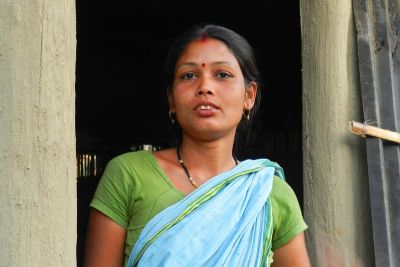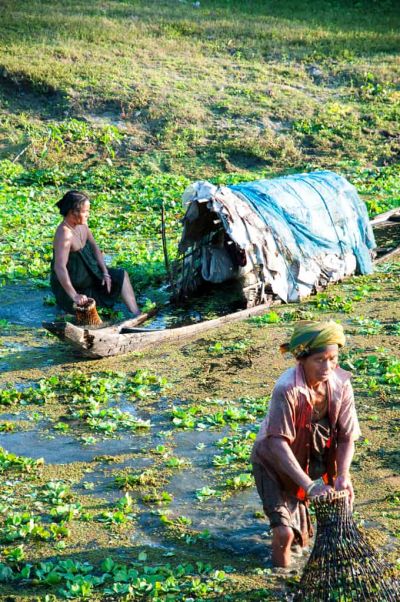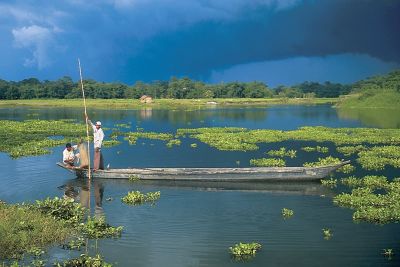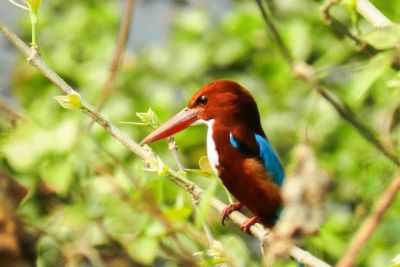History, peoples and environment of Assam
History
Following the colonization of the region of present-day Assam by various tribes originating from Southeast Asia, the area was under the rule of the Buddhist Ahom dynasty for 600 years from 1228, with Sibsagar as the capital. The Ahom family belonged to the Burmese Shan tribe. They were able to fend off various invasions by the Mughals and the Sultan of Bengal and increasingly shielded their kingdom from outside influences, which led to the development of a completely independent culture.
It was King Rudra Singha who is said to have reopened a trade route between Tibet and Assam at the beginning of the 18th century. He also encouraged Bengali musicians to reside at his royal court. The Ahom family intermarried with other Bengalese and Burmese troops invaded the kingdom until the British officially took over Assam in 1826. They administered the area until 1947. Until the reorganization of India in the course of independence, Assam comprised the entire region of north-east India; today’s Assam consists of only a fraction of this area after various partitions.
Most recently, the state of Meghalaya split off in 1972, which also took over the then current capital of Shillong; the new capital of Assam became Dispur. Since 1979, the United Liberation Front of Asom (ULFA) has been fighting for the independence of the state from the Indian Republic with guerrilla actions; the separatists are being fought militarily by the Indian government.
Peoples and religions
The first people to settle in Assam were probably members of the Tibetan Bodo people, who reached the banks of the Brahmaputra via the Himalayas. Later, various tribal peoples from South China and Southeast Asia such as the Naga, Mizo, Kachari, Khasi and some others settled in the mountainous regions south and east of the river. It was only relatively recently that Hindus, who today make up the dominant Assamese people, also migrated.
According to tradition and archaeological evidence, many of today’s Hindu pilgrimage sites were built at early Buddhist power centers of the indigenous peoples. An example of this is the Kamakhya Hindu temple in Guwahati, below which is a much older Buddhist temple. Since the time of the British colonial power, the rights of self-sufficient tribal peoples have been protected, and even today Assam is a multi-ethnic state with around 16 indigenous tribes. The predominantly illegal immigration of refugees from Bangladesh is a growing problem and, in addition to the increase in the already strong population growth, is repeatedly causing xenophobic attacks.
The religious affiliation of the population of Assam is very closely aligned with the tribal affiliation. In Assam, for example, around 50% are Hindu, with an emphasis on Durga, Shiva and Ganesh (Vainshaba). On the river island of Majuli is the seat of the Vaishnava school, founded in the 15th century by the great reformer and saint Shankardeva. The temples are still active today and also give travelers a deep insight into the culture of Hinduism.
Other religious groups in Assam are the Muslims with around 30% of the faithful, who are mainly found among the immigrants from Bangladesh and Bengal, Sikhs, Christians and – especially in the tribal peoples – animists with their ancestor worship form the group of minority religions. In a few tribes, Buddhism is still the dominant religion, for example in the Tai-Phake villages of Assam, whose inhabitants belong to Hinayana Buddhism and whose history leads to Thailand. The Tai-Phake speak a dialect that is closely related to Thai. The people follow traditional Thai traditions and dress accordingly. One of the oldest active Buddhist temples in Assam is also located here, the Namphake Monastery, which dates back to 1850.
Food
Assam’s cuisine is characterized by a mixture of local and foreign influences with regional specialties. Easy, fresh and well-seasoned dishes are characteristic. Fermented ingredients are widely used, which gives the food its very own characteristic taste. Assamese food tends to be mild, far less spicy than elsewhere in India, which is quite appealing to the European palate.
The staple food is rice, which is served in fish, lentil and meat curries together with herbs and vegetables. The curries are usually refined with ginger, garlic, cardamom, cinnamon, onions and sometimes lime.
During Hindu festivals, sweets made from rice paste are popular. One specialty you should definitely try during your vacation in Assam is pitha: a wafer-thin crêpe filled with sweet coconut paste or sweetened black sesame paste.
Flora and Fauna
Assam is one of the richest biodiversity zones in the world. The country has numerous tropical rainforests, unique wetlands, bamboo groves and vast grasslands. Many of these areas are protected.
In the monsoon season, the Brahmaputra and Barak rivers (as the upper reaches of the great Meghna river are called) flood large parts of the country, leaving behind energy-rich sediments that fertilize the soil and make it extremely fertile. This is not only good for agriculture, but the original flora is also particularly rich and diverse and home to an above-average number of different animal species.
The pristine wildness of Assam’s nature provides a delightful contrast to the cultivated tea plantations and makes for educational excursions and varied vacation days.
National parks & nature reserves
The Kaziranga and Manas National Parks are on the UNESCO World Heritage List. They are home to the rare Indian rhinoceros and the Bengal tiger, among others. Namdhapa National Park is the only place where all four of India’s wild cat species live.
Kaziranga National Park
The national park offers a diverse mosaic of rainforest, grasslands and wetlands within its 430 km² core area. The national park is famous for the Indian rhinoceros, which lives here.
Manas National Park
The national park, which covers over 500 km², has its own tiger reserve and is part of a total protected area of over 5000 km². Manas is a paradise for ornithologists and fishing is also possible.
Nameri National Park
Perhaps the most beautiful national park in Assam. It is famous for its large elephant population, among other things. A boat trip on the Jia Bhoroli River is also worthwhile.
Orang National Park
You can marvel at one-horned rhinos, elephants, leopards, deer, tigers and many water birds. The park is also famous for its migratory birds from all over the world.
Pabitora Sanctuary
In addition to the Indian rhinoceroses, leopards, Indian civets and many bird species also live here.
Economy
About 80% of Assam’s inhabitants work in agriculture and produce, among other things, the world-famous, strong, tangy tea, which makes up the majority of the state’s export volume. Rice, sugar cane, jute, oilseeds and fruit are also grown and Assamese silk – especially the special type of silk known as “muga”, or “golden silk” – is in demand worldwide. Bamboo and rattan products in the form of furniture and decorations are also of economic importance.
The second major pillar of the Assamese economy, however, is the extraction of crude oil and natural gas as well as the corresponding processing industries such as oil refineries. Coal, limestone and granite are also mined and there is cement production. The population of Assam lives predominantly in rather poor conditions in the countryside, but the literacy rate is still around 75% and therefore slightly above the average for India as a whole.
Bhutan’s main export goods include electricity, which is generated in hydroelectric power plants in the west of the country, while cement, wood products, alcoholic beverages and fruit also contribute to foreign trade income. Another economic sector is tourism, which has experienced slight growth rates in recent years and whose expansion is also based on the principle of sustainability.




